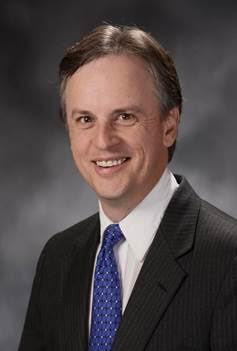THE EGGLESTON REPORT – AMENDMENT 3:REDISTRICTING

I’ve often said I want my constituents to be the most informed voters in the state, and so I have offered explanations of ballot measures so you can cast a well-educated vote. In this report, I outline Amendment 3, which you will vote on this November, or sooner if you vote absentee.
First, the back story. Every state House district encompasses about the same number of Missourians, around 37,000. Every state Senate district is about 177,000 people. To get these numbers accurately, the districts are redrawn every 10 years after each census. The method of re-drawing districts has been contentious since the term “gerrymandering” was coined in 1812.
The rules on district drawing are outlined in our state Constitution. The last time they were drawn was after the 2010 census, and the foremost rule required districts to be “compact and contiguous”, not some squiggly gerrymandered shape. My district is a prime example being drawn on the border of Daviess, DeKalb, Gentry, and Harrison Counties in an almost perfect square.
In 2018, Amendment 1 was on the ballot, and it professed to be ethics reform for the state legislature. Nicknamed “Clean Missouri”, it reduced the size of lobbyist gifts to legislative candidates, reduced campaign contribution limits, and prevented a legislator from becoming a lobbyist for two years. All good stuff. But it turns out there was also language in it adopting new rules for re-drawing districts unlike that of any other state, which it is now believed by many to be the prime motive of its sponsors.
While it failed in my district, Amendment 1 passed statewide. So now the redistricting rules are that “compact and contiguous” is the least important consideration. The most important is “competitiveness”, meaning every House and Senate district must have the same Republican / Democrat proportion as the whole state has. This is calculated by adding the number of Republican votes in the last three elections for governor, senator, and president, and comparing them to Democrat votes. In my district, those numbers are 64% R / 36% D. In the whole state it’s 50/50. That means to comply with the new rules, our area would get subdivided and connected with another area that’s about 36% R / 64% D to achieve “competitiveness”, and that other area would likely be the urban core of Kansas City.
If those rules stand, the effect is that we will likely end up with more urban legislators and fewer rural ones since urban candidates would compete with rural ones in each race, and urban areas have better access to media and more money to fund their campaigns. It turns out the prime funders of the Clean Missouri campaign were an east coast PAC and a liberal Texas group called Action Now ran by a former Enron exec. These two groups are known supporters of the more politically liberal policies that are embraced by urban legislators. And our state is not alone. PACs like these have been using the initiative petition process to target Midwestern states with east/west coast ideas. But that’s a big, long story for another report.
Voting Yes on Amendment 3 (nicknamed Cleaner Missouri) in November would keep the ethics reforms of Clean Missouri, but return the rules of redistricting to the “compact and contiguous” language like we had before, keeping similar communities together. And if Amendment 3 passes, the ethics measures would be strengthened by further reducing campaign contribution limits and totally eliminating gifts from paid lobbyists to legislators. Amendment 3 will not affect my House seat since I will be term-limited out when redistricting occurs. But it will insure that your next state rep will be someone from our area instead of possibly KC.
Ballotpedia.com has some good, non-partisan info on this issue at tinyurl.com/y2rd7c56. The actual ballot language can be found at sos.mo.gov/elections/petitions/2020BallotMeasures. Until next time, health, happiness and prosperity to you and your family.



